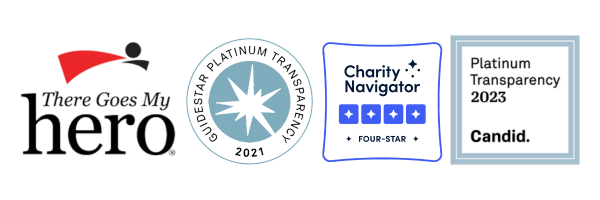How a Peripheral Blood Stem Cell Transplant Can Be Lifesaving
Stem cells are special cells. They are the only human cells that can develop into a variety of different cell types, like blood, bone, and muscle cells. They produce white blood cells, red blood cells, and platelets, while also playing a key role in tissue repair. However, when stem cells become damaged, they lose their ability to divide, differentiate, and function effectively.
For many blood cancers, immune system disorders, and some inherited conditions, chemotherapy and radiation therapy are unable to provide a cure. A physician may recommend a transplant to save a patient’s life when no other treatment is effective. For some diseases, transplants are the only possible cure.
Peripheral blood stem cell transplants (PBSCT) are most often used to treat cancers that affect blood cells, such as leukemia, lymphoma, multiple myeloma, myelodysplastic syndromes, and myeloproliferative disorders. Stem cell transplants may also be used for other blood disorders, such as aplastic anemia, sickle cell disease, and autoimmune diseases.
PBSCT replaces stem cells that have been destroyed by disease, radiation, or high doses of chemotherapy with healthy blood-forming stem cells. The healthy stem cells may come from the patient’s own blood or from a donor.
Types of PBSCT
- Autologous or self-donation: the patient’s own stem cells are collected before radiation or high-dose chemotherapy treatment, reducing the risk of reintroducing cancer cells during the transplant.
- Allogeneic or donor provided: stem cells donated by someone who is a blood relative or non-blood relative (if the cells are a close enough match to the patient). It is important that the stem cells match closely enough that the patient’s immune system won’t see the newly transplanted blood stem cells as foreign and destroy them.
- Syngeneic: rare type of allogeneic stem cell transplant in which stem cells are donated by the patient’s identical twin.
Explore the path to PBSCT
Join the national bone marrow donor registry to become a donor.
- Register online or in person at a donor recruitment drive.
- Order a free swab kit and receive it in the mail within 3-7 business days.
- Swab the inside of the cheeks and gums per the instructions and mail back inside the postage-paid return envelope. The swab kit will be tested in a process called tissue typing to determine the Human Leukocyte Antigen (HLA) profile, which are the immune system factors used to match donors and recipients. The HLA profile will be added to the national bone marrow donor registry.
Human leukocyte antigen (HLA) typing
- Human leukocyte antigen (HLA) typing is a DNA-based tissue test used to match patients and donors for transplant. HLAs are proteins, or markers, present on the surface of most cells.
- The immune system uses these markers to recognize which cells belong in the body and which do not. The closer the HLA match, the greater the possibility that the patient’s body will accept the newly donated cells, allowing them to grow and create new healthy cells.
Peripheral Blood Stem Cell Transplant (PBSCT)
Autologous
Before the transplant
Stem cell collection can occur one month to a few years prior to the transplant. About one week before the stem cells are collected, the patient will start taking a medication that stimulates the bone marrow to produce more stem cells. The patient will have daily blood testing to confirm when there are enough stem cells for collection.
When there are enough stem cells, the patient will be connected to an apheresis machine, which removes some of the patient’s blood through a central IV line. After the machine separates and collects the stem cells, it then returns the remaining blood to the patient. The stem cells are then frozen and can be safely stored for many years.
Prior to the transplant, the patient receives a conditioning treatment of high-dose chemotherapy or radiation therapy. These conditioning treatments are often performed in a hospital or outpatient center a few days before the transplant procedure.
Transplant day
The stem cells are thawed and infused through the central IV line back into the patient’s bloodstream. The infusion is like a blood transfusion lasting around 30-60 minutes.
Allogeneic
Before the transplant
Similar to the autologous transplant, the patient will receive conditioning treatment prior to the transplant procedure. The type of conditioning is based on the type of cancer, type of transplant, and any past treatment. The conditioning may involve lower-dose chemotherapy, high-dose chemotherapy, or radiation therapy.
Transplant day
Stem cells are usually infused through the central IV line into the patient’s bloodstream the day after their last dose of chemotherapy or radiation treatment. The donor cells have not been frozen and do not contain preservatives. The infusion is similar to a blood transfusion lasting around 1-2 hours.
Recovery
Patient: The recovery stage starts right after the transplant. It takes about 2-6 weeks for the cells to begin multiplying and creating new blood cells. The side effects from autologous, allogeneic, and syngeneic stem cell transplants are similar, including low blood cell count, infection, and bleeding. Allogeneic transplant patients may develop graft-versus-host disease (GVHD). This complication involves the donor’s stem cells viewing the patient’s body as foreign and attacking healthy tissues.
Donor: They typically return to work, school, and other activities within 1-7 days following the donation.
Quote from the DKMS website: “We provide blood cancer patients with a second chance at life.”
Penny Pratt, RN—A seasoned RN and freelance writer with 30 years of healthcare experience, dedicated to educating, inspiring, and empowering others through clear and impactful content

